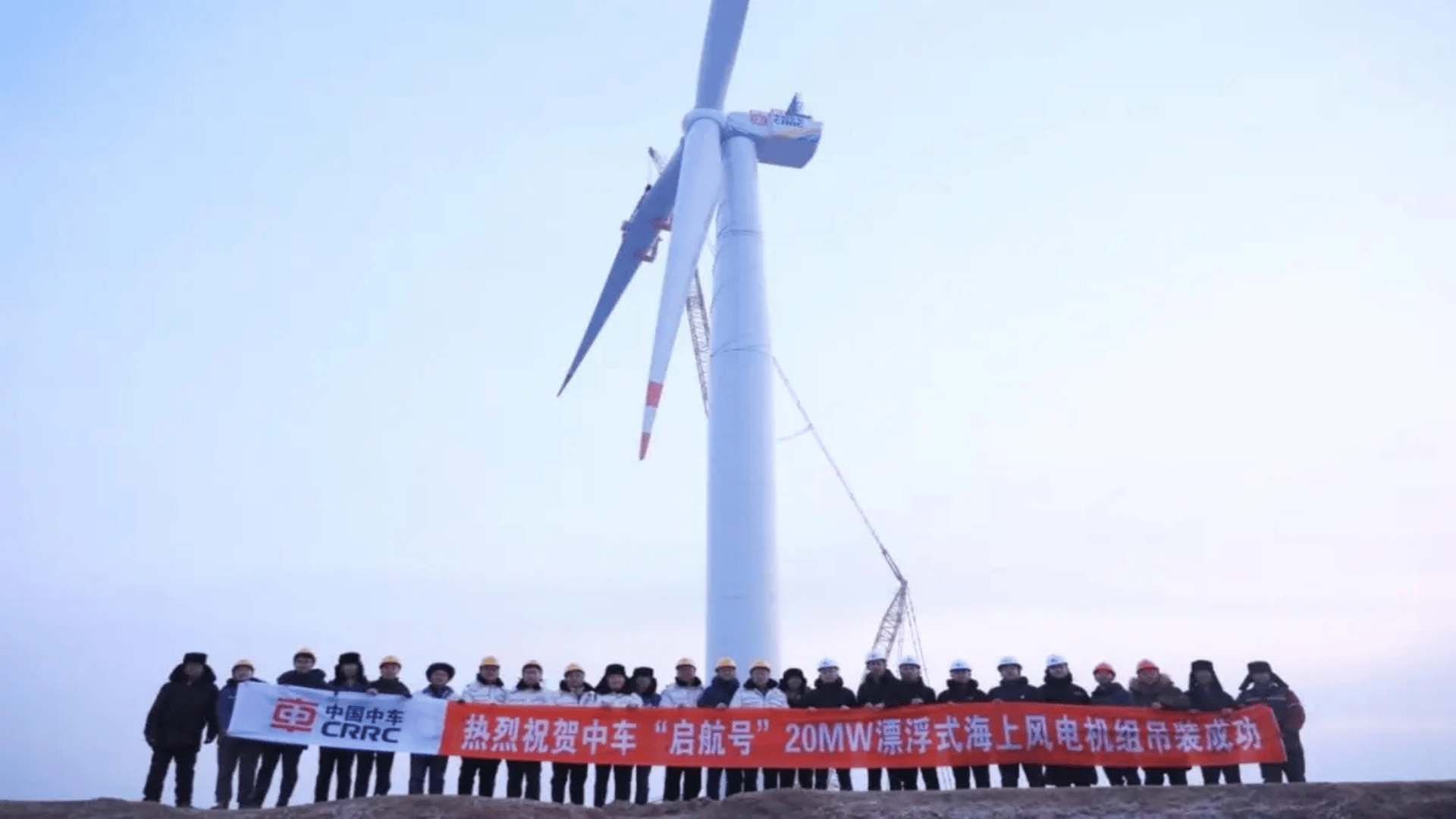The world’s largest floating offshore wind turbine was recently unveiled, possessing blades that span a length equivalent to seven soccer fields.
World’s Largest Floating Wind Turbine

The world’s first commercial floating offshore wind power system, with five turbines and a capacity of 30MW, began producing energy off the northeast coast of Scotland eight years ago. The 16-megawatt (MW) system was completed in the city of Beiha and will now be towed to waters over 164 feet deep for testing. After testing, it will be connected to the grid and used commercially.
The wind turbine’s rotor reportedly has a diameter of 826 feet (252 meters), and once it’s fully operational, it will generate approximately 44.7 million kilowatt-hours (kWh) of electricity per year. This would be enough energy to power approximately 4,000 US households.
The semi-submersible platform onto which the turbine is mounted automatically adjusts to shifting wind and wave conditions with a dynamic ballast system. The adjustments are made by pumping water in or out of tanks located within its three support columns, which helps reduce tilt, lowers the risk of shutdowns, and enhances safety and efficiency. This is crucial for enabling the turbine to operate effectively in the challenging conditions of offshore environments.
The next step will be moving the platform out to deeper waters, where it will have access to stronger, steadier winds than fixed land foundations. Floating offshore wind farms represent a breakthrough in harnessing wind power in areas where traditional fixed-bottom turbines aren’t feasible.
The project is being led by China Three Gorges Corporation, a firm that built the world’s largest hydropower plant, the Three Gorges Dam, and is now the world’s biggest hydropower developer and operator. By expanding wind energy’s geographic reach and harnessing more consistent wind patterns farther from shore, projects like this one could significantly boost global clean energy capacity while minimizing the environmental impact on land.







